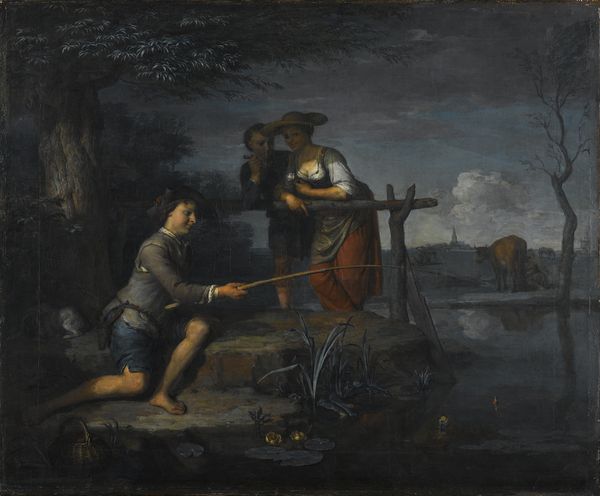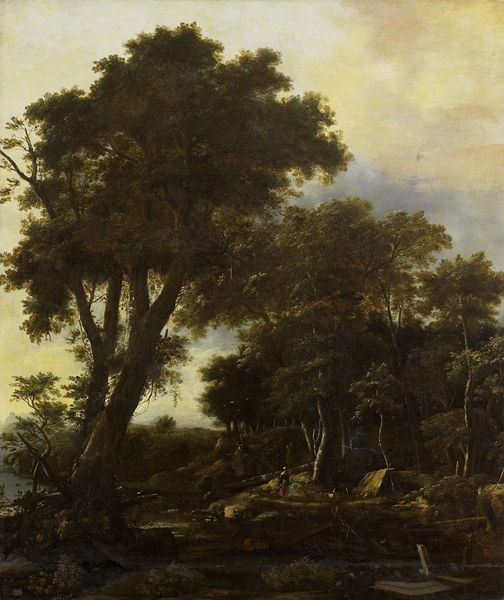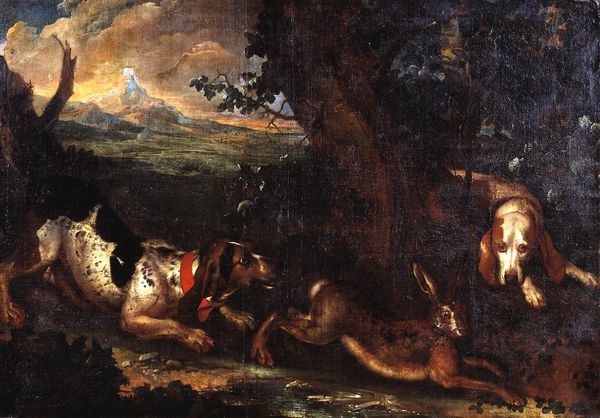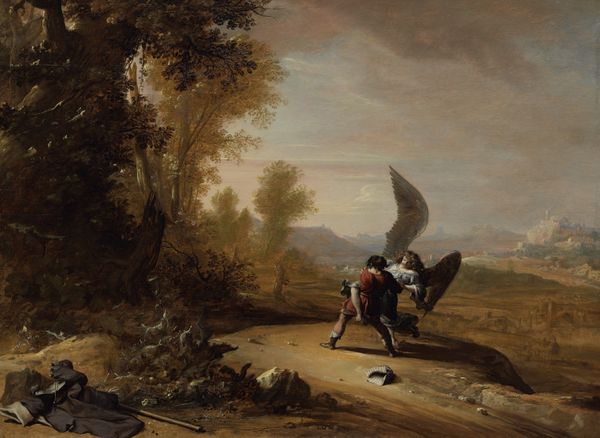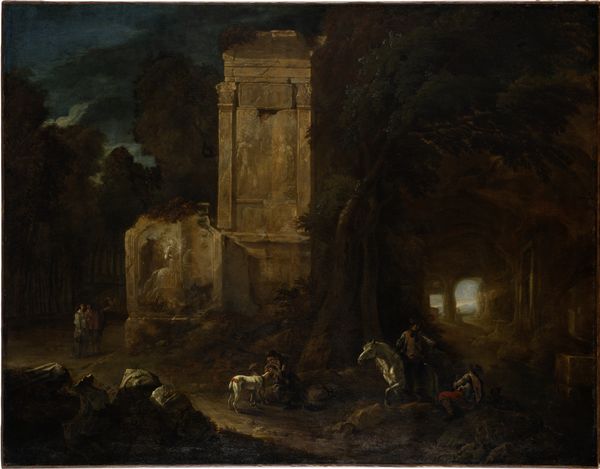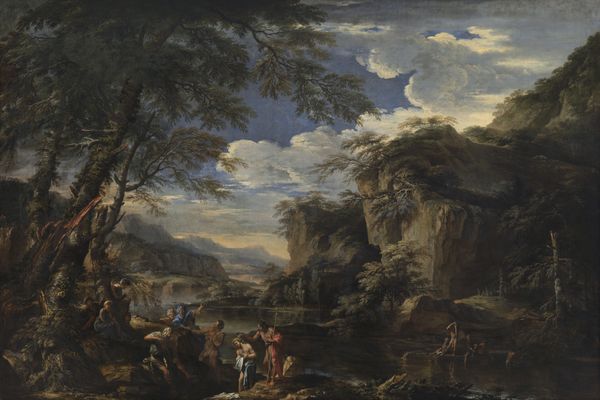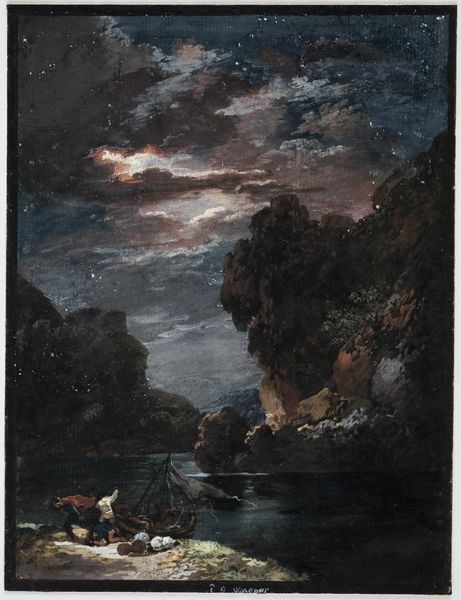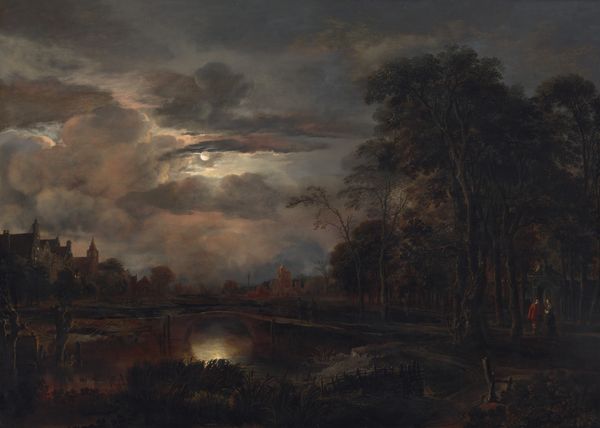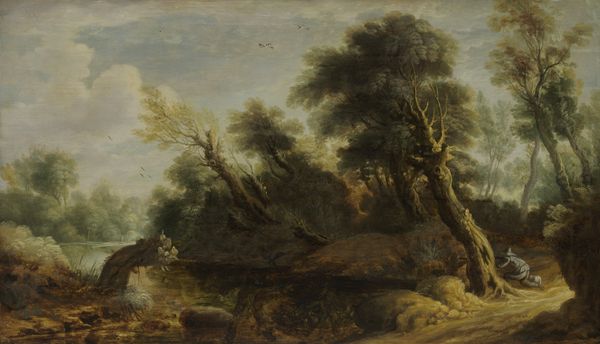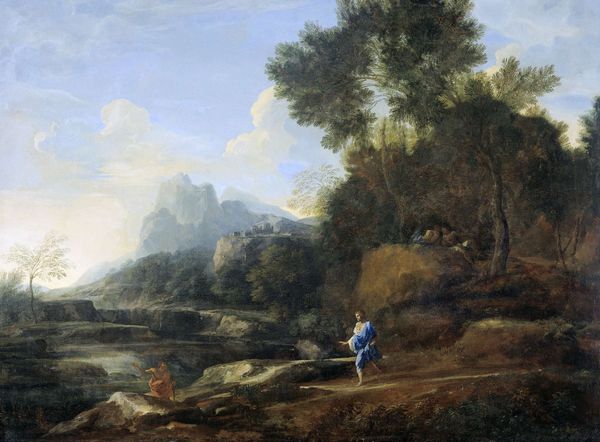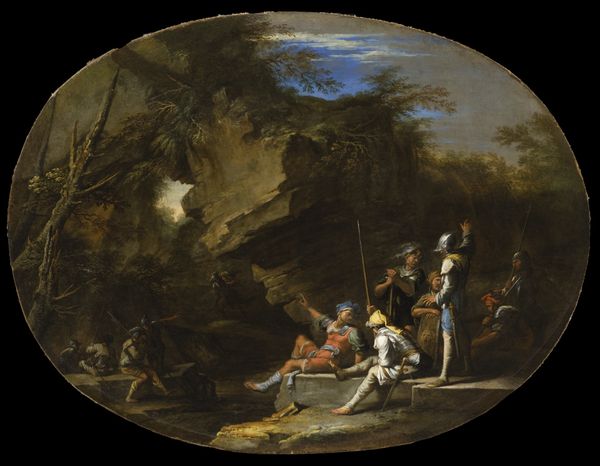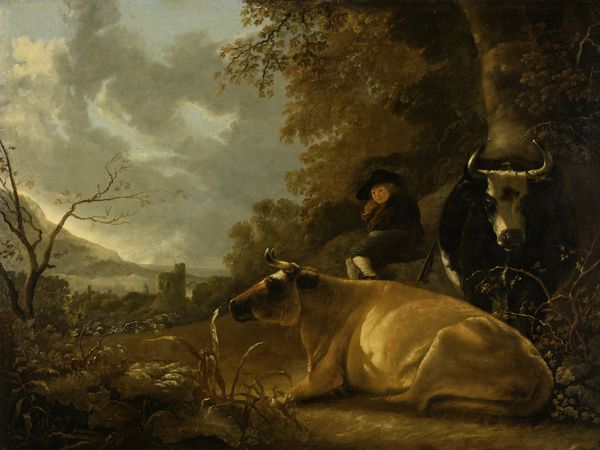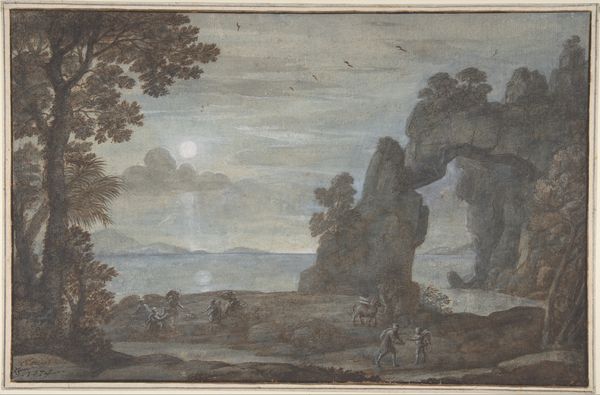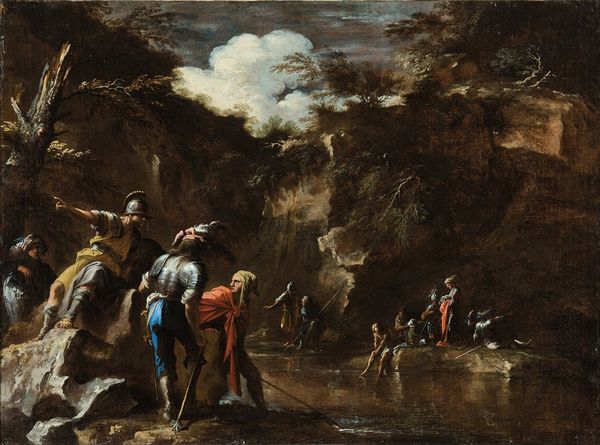
Fingal Sees the Ghosts of his Forefathers by Moonlight 1780 - 1784
0:00
0:00
Dimensions: 49.5 cm (height) x 61 cm (width) (Netto), 60.4 cm (height) x 72.2 cm (width) x 5.1 cm (depth) (Brutto)
Editor: So, this is Nicolai Abildgaard's "Fingal Sees the Ghosts of his Forefathers by Moonlight," painted between 1780 and 1784. It's oil on canvas, and the first thing that strikes me is how dramatic it is – a lone figure under this enormous, ghostly sky. What do you see in this piece, particularly considering its time? Curator: It’s a fascinating work to analyze, especially within the context of late 18th-century Romanticism. Abildgaard is engaging with ideas of national identity and the "noble savage," ideas circulating thanks to texts like James Macpherson’s "Ossian" poems. Think about the way this solitary figure, Fingal, confronts his ancestral past under a spectral moon. The painting really evokes a sense of sublime terror and awe. What does the concept of the sublime mean in relation to ideas circulating about identity and gender? Editor: It's the overwhelming power of nature and history made visible. So, the ghosts and the landscape connect him to something larger than himself, to his own ancestry. He is literally dwarfed by it, no? Is it like the feeling when the individual understands that their cultural group has history, destiny, identity beyond a singular lifespan? Curator: Exactly. The Romantics were fascinated by that encounter. But note too the *masculinity* on display – the warrior hero confronted by his past. The sublime in Romantic art often centers on the male figure's capacity for experience; so think how that perhaps relates to questions of exclusion and othering that continue today. Does the artist use the dogs to amplify masculinity here? Editor: Oh, definitely. The dogs, alert and primal, reinforce that heroic, almost savage masculinity. The ghostly forefathers are specifically forefathers; this inheritance feels intensely gendered. It seems like a powerful statement about lineage and the burden of history on masculine identity, a theme still resonant today in discussions about societal roles and expectations. This conversation really makes me look at this piece in a new way! Curator: And for me, you have pinpointed important questions on history. We both explored the narrative about who is *included* and *excluded* when we talk about inheriting our collective histories.
Comments
No comments
Be the first to comment and join the conversation on the ultimate creative platform.
